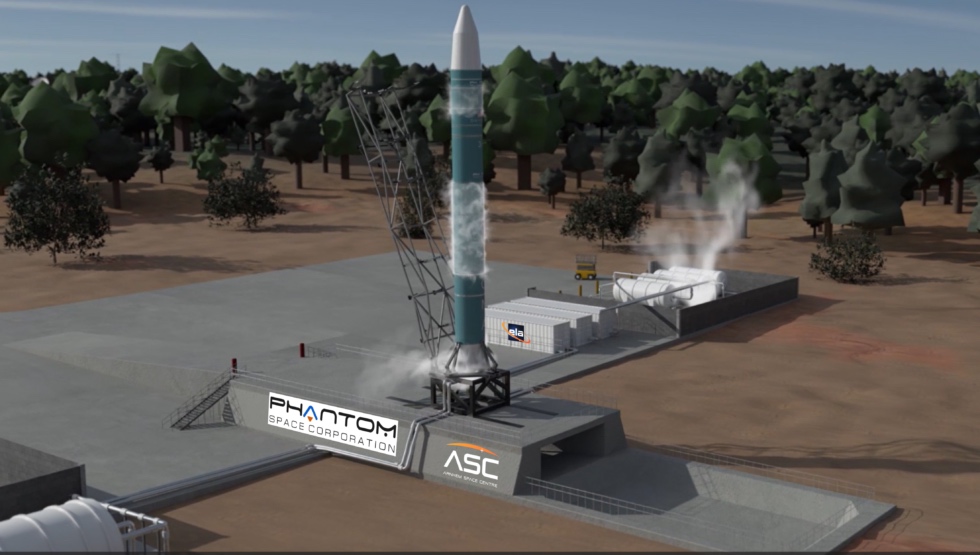Products You May Like
HUNTSVILLE, Ala. — The governments of Australia and the United States have signed an agreement that could allow American rockets to launch from Australian spaceports, although it is unclear how much demand there is for them.
The U.S. State Department announced Oct. 26 that the two countries signed a technology safeguards agreement (TSA) regarding space launches from Australia. The agreement provides the “legal and technical framework” for American launches from Australian facilities while protecting sensitive technologies.
The TSA is required to allow the export of U.S.-built launch vehicles to Australia. Industry officials in Australia said the agreement will allow spaceport projects there to sign long-awaited deals to host launches by American companies.
“We hear regularly from both the U.S. government and industry of their demand for this capability in Australia,” said Jeremy Hallett, executive chairman of the Space Industry Association of Australia, in a statement. “This agreement removes the blockage stopping this demand being met by Australian space industry and we look forward to the new business opportunities that will emerge for the industry.”
Spaceport projects in Australia include the Arnhem Space Centre in the Northern Territory, being developed by Equatorial Launch Australia (ELA), as well as the Whaler’s Way Orbital Launch Complex and Koonibba Test Range in South Australia by Southern Launch.
Both spaceport companies welcomed the TSA signing. “‘The TSA is a game-changer for Southern Launch,” said Lloyd Damp, chief executive of Southern Launch, in a statement. “The US space industry has been leading the space race for generations and this agreement will allow us to work closely with U.S. space companies to facilitate launches or returns from our Australian sites.”
“We have been engaged with and negotiating with U.S. rocket manufacturers for several years now and we have all be awaiting the TSA completion,” said Michael Jones, chairman and group chief executive of ELA, in a statement. The signing of the TSA “clears the way for us to finalize our contracts with U.S. launchers.”
The precise demand for Australian launch sites from American launch companies remains unclear. The ELA statement included an illustration of four small launch vehicles from ABL Space Systems, Astra, Phantom Space and Vaya Space, as well as Rocket Lab’s Neutron medium-lift rocket.
Of those companies, the only one that ELA had previously identified as a prospective customer is Phantom Space. In April, the two companies said they were expanding a previously undisclosed memorandum of understanding with plans for a “multi-launch contract” for Phantom’s Daytona rocket. That rocket has yet to make its first flight although Phantom’s website states it is “booking launches for 2023.”
While ELA said at the time that the agreement was the “first of several agreements ELA is expecting to announce in mid-2023,” the only agreement announced since then has been with South Korean launch vehicle developer Innospace, which signed a contract to conduct an unspecified number of launches from Arnhem Space Centre between 2025 and 2028.
Speaking at the Satellite Innovation conference in Mountain View, California, Oct. 18, Jones said he hoped to have more contracts to announce before the end of the year as it works with Asian, European and American launch providers. The center, he said, can support seven launch complexes, each with two pads. “We’ll almost be booked out by Christmastime. That’s our hope.”
Southern Launch has not identified any American launch customers for its facilities, having worked previously with Taiwanese launch company TiSPACE and its Australian counterpart, ATSpace. Southern Launch did announce an agreement Oct. 19 with Varda Space Industries to host landings of Varda capsules at the Koonibba Test Range. “The TSA makes this process easier,” Damp said, including possibly relaunching those capsules on American rockets from the Whaler’s Way site.
The TSA is part of broader space cooperation between the two countries announced during the visit of Australian Prime Minister Anthony Albanese to the United States. A White House statement Oct. 25, which mentioned the planned signing of the TSA, also discussed “progress in negotiations of a bilateral space framework agreement” as well as “further joint commercial investment across all sectors, including space situational awareness and commercial space stations.”
